ARTICLES
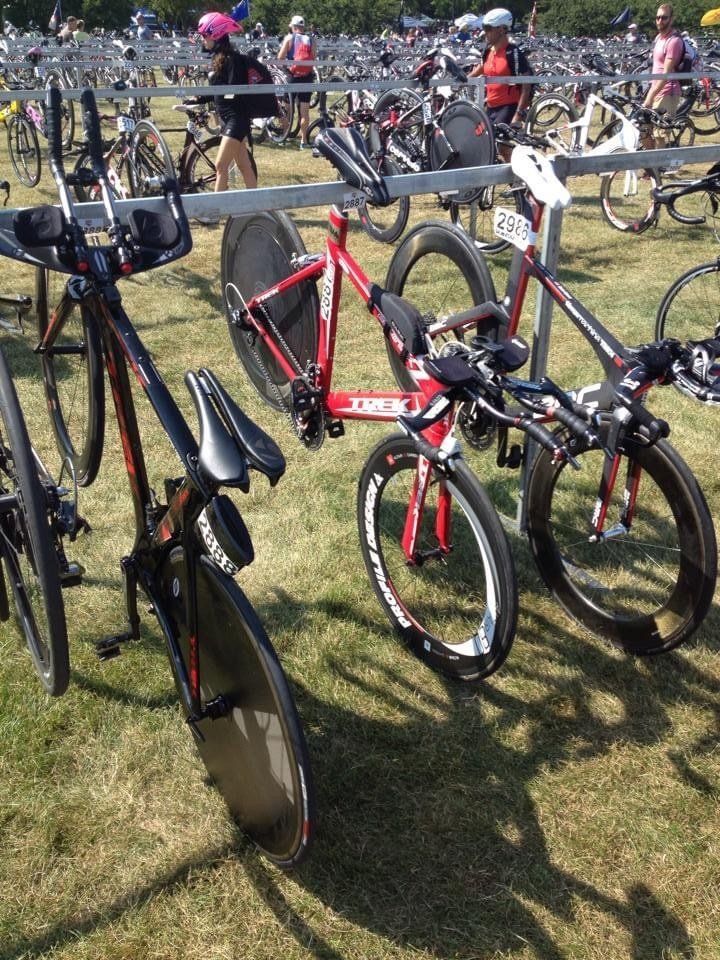
You have been training for quite some time now and it is your chance to express all of the fitness you have accumulated. As the date of your first race creeps forward you witness your anxiety level elevating exponentially. Questions start to flood your brain and hopefully this article will answer most of them for you. If you are traveling a long distance please refer to our Travel for Tri article for additional details. Let’s start with the few days leading into the race. Gear and Nutrition are often the focus during this time. Swim – Most training plans have you staying in the water so you won’t lose your feel for the water as close to the race as possible this often gets tricky if traveling for a race and a swim the day before or the morning you start travel to the race venue is often recommended. Hopefully you have swam in your wetsuit previously if not be sure to use it in the pool on this last swim and be sure to flush the suit inside and out to remove all chlorine. Pack List
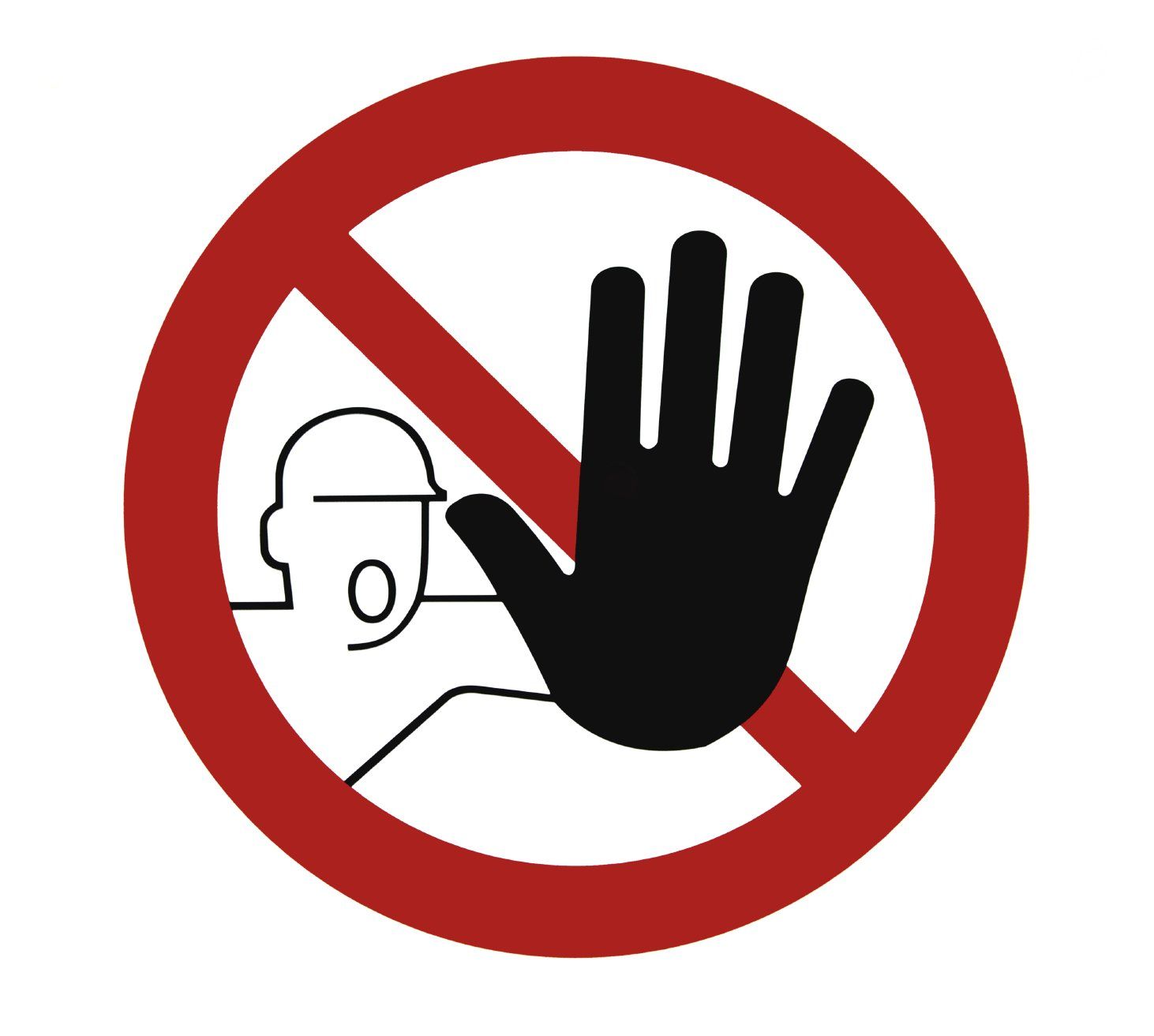
Most age group athletes work full time and have family lives that causes them to be spread very thin at times. The compounding rigors of their training and racing may cause excessive stress and distorted behavior patterns and even may cause the athlete to relapse in diet and or alcohol use. H-HUNGER This is not saying you aren’t going to be hungry. Everyone gets hungry after a 3 hour run. This is saying that if you skip a meal because you failed to plan or ran out of time this is going to be a trigger that can lead to a cascade of negative consequences later that day or the next. Setting up an evening ritual of preparation of meals for the following day can be a quick way to mitigate the mishap of missing or forgetting a meal A-ANGER We all get pissed off and sometimes rightfully so. Take some time and evaluate what actually is setting off your anger? Is it a stressful commute where you barely make it to work on time every morning? Do you get stuck behind the same school bus every other day. Can you avoid these situations? Can you change your morning routine to help? Would a 15 minute earlier wake up call lead to less stress throughout the day and give you 5 minutes alone at your desk to decompress before your first meeting of the day setting you up for success in the workplace? We can cover every possible trigger here but more than likely it is a scenario that we can avoid or take steps to improve. L-LONELINESS As humans we are very social creatures and rely on others more than we realize. Maybe you have a spouse that leaves you at home while they go on a business trip or you yourself has to go on a business trip. This loneliness can leave a person feeling very anxious and uneasy. This may cause the person to lash out and guilt their vacating spouse to gain their attention and is often very self serving. This could cause the person to grab a bottle of wine for their dinner after the workouts for the night. Loneliness is natural but noticing that it causes certain behaviors is the first step in dealing with a plan to reduce it. T-TIRED Are you a plain old crab apple when you get overtired? Do you lose discipline on your diet when you get overtired and don’t feel like making something? Do you grab a cocktail so you can just pass out? Sleep deprivation is one of the biggest problems we see with athletes. Sleep deprivation isn’t just a single night event. We develop a sleep debt that we need to repay over several nights to make up for it. Sleep deprivation sets us up for being in a metabolic state that not only impacts our recovery but also can have large consequences on our body composition. A person who is sleep deprived is often walking around insulin resistant sometimes at levels of a pre-diabetic. This means Insulin the transporter of the energy from the food we ingest can’t get the energy into the target cells and it gets stored as fat. Some quick tips for improving sleep hygiene would be: 1. No caffeine afternoon 2. Reduce screen time 1 hour prior to bed 3. Make room as dark as possible 4. Lower temperatures from daytime room temperatures in bedrooms 5. Don’t drink excessively prior to bedtime (water and especially alcohol). A personal analysis of what is HALT’ing your progress and triggering your negative behaviors is not only going to help assist with your performance in endurance sports but also your performance in life.
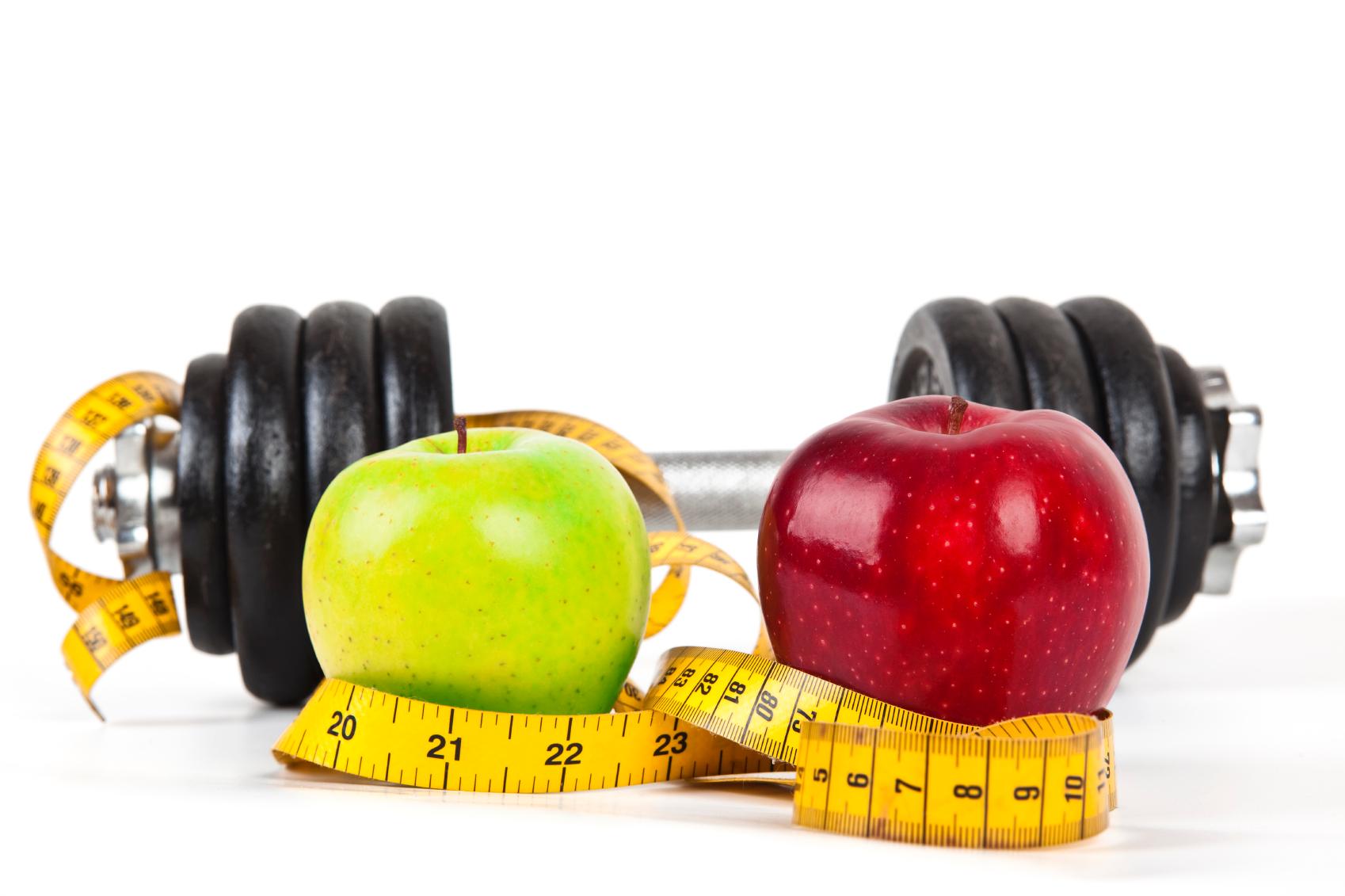
Intro to Nutrition: Imagine if you were in a big city traveling with a large group of people. You got to the subway station and realized only a small amount of you would fit on the subway car. You are left with two options: wait for the next subway car and continue to move your group over a longer period of time or use the bus that runs at street level and move some of your group to your destination at the same time on the bus. Even though the bus takes longer the synergistic effect of being able to trickle some of your group members to your destination via two transport systems is most efficient. Race day nutrition functions in a similar manner. An average size male athlete has absorptions rates between 30-90grams/hr during exercise. The upper end of this scale 90g can only be achieved with utilizing multiple delivery methods our bodies can utilize. We transport glucose and fructose via different transport systems. Knowing what is in your nutritional product is key and what you tolerate well is vital to your performance. Triathlon Fueling Options There are many triathlon fuel options available and an entire industry devoted to it. Glucose, fructose and maltodextrin are the primary ingredients that contain the calories of these fuel sources. The delivery methods come in powders that are mixed into liquids solutions, gel packets, bars, chewy candies etc… The delivery method to use is very individual. As intensity increases blood is shunted from the core of the body and shifted out to the working skeletal muscles. This slows the digestion process down significantly and may wreak havoc on a normally iron stomached person. With under-fueling the dreaded “bonk” or “hitting the wall” technically called hypoglycemia may show up stopping an athlete in their tracks whereas on the polar opposite end of the spectrum over fueling in a short duration may lock up the stomach and shutdown all forward progress and leave you lying on the side of the course in the fetal position contemplating jumping in front of traffic to end the misery. As the distance of your triathlon increases nutrition inevitably becomes more and more important. As any motor vehicle is limited by it’s efficiency and size of it’s gas tank the human body functions in a similar manner. We can store around 1hr-1.5 hrs worth of calories on board in the form of glycogen which we store in our skeletal muscles and liver. Practicing Nutrition for Half-Ironman and Ironman Distance Events In half Ironman and Ironman distance events developing and practicing a nutritional strategy is vital and should be implemented in to the specificity of the workouts during the build- up. The old cliché “Nothing new on Race day” is very fitting in regards to nutritional strategies, therefore rehearsal and fine tuning is imperative. Individuals usually tolerate liquids fairly well. If you can find out what you’re “A” race will have available on course it is a good idea to start utilizing that on your longer workouts, or have a strategy and set up that allows you to carry all you will need on board your bike of a liquid of you’re choice. A host of bike hydration options are available, often a simple behind the seat and between the aerobars set up is a good safe option. Practice with that bottle location to assure you can that it can be safely and effectively reached during the ride. On the run there are options to carry your own liquids as well through the use of fuel belts. Maltodextrin products such as CarboPro are tasteless and easily dissolvable in most liquids. There are also flavored options available @ INFINIT Nutrition (IREPINFINIT for 10% off at check off) Practice adding these at different amounts to deliver more calories during exercise to replace the calories burned and increase performance. Triathlon Fueling Options Continued Gels would be our next easiest product to process during an event. Some gels are mixed with sources of fuel that come from fructose and glucose. Also pay attention to your electrolyte needs, a “salty” sweater may benefit from a gel that contains more sodium in hot/humid conditions. You may also get some benefit from gels that contain caffeine as it is a proven performance enhancer. As food sources start to get more solid the processing time increases as some more complex digestion is required. Some may choose to experiment with more semi solid/solid food sources. While some do very well with these types of fuel, be cognizant of how easily these are eaten at race pace. The unwrapping and chewing process can be more difficult than one may think and leave people unsteady on a bike or choking on the run. A quick and easy starting point is to assign 2 calories per hour per pound of lean body weight. Example: 200lb @ 20% Bodyfat 200lbs x .20 = 40 lbs of fat 200lbs – 40lbs = 160 lbs of lean body mass 160lbs x 2 cals per lb per hour = 320 calories/hour In summary, KISS (Keep, It, Simple, Stupid). The less moving parts the better and the simpler your nutrition strategy the more likely you are to execute it perfectly. Sometimes Less is More and Nothing New on Race Day!!
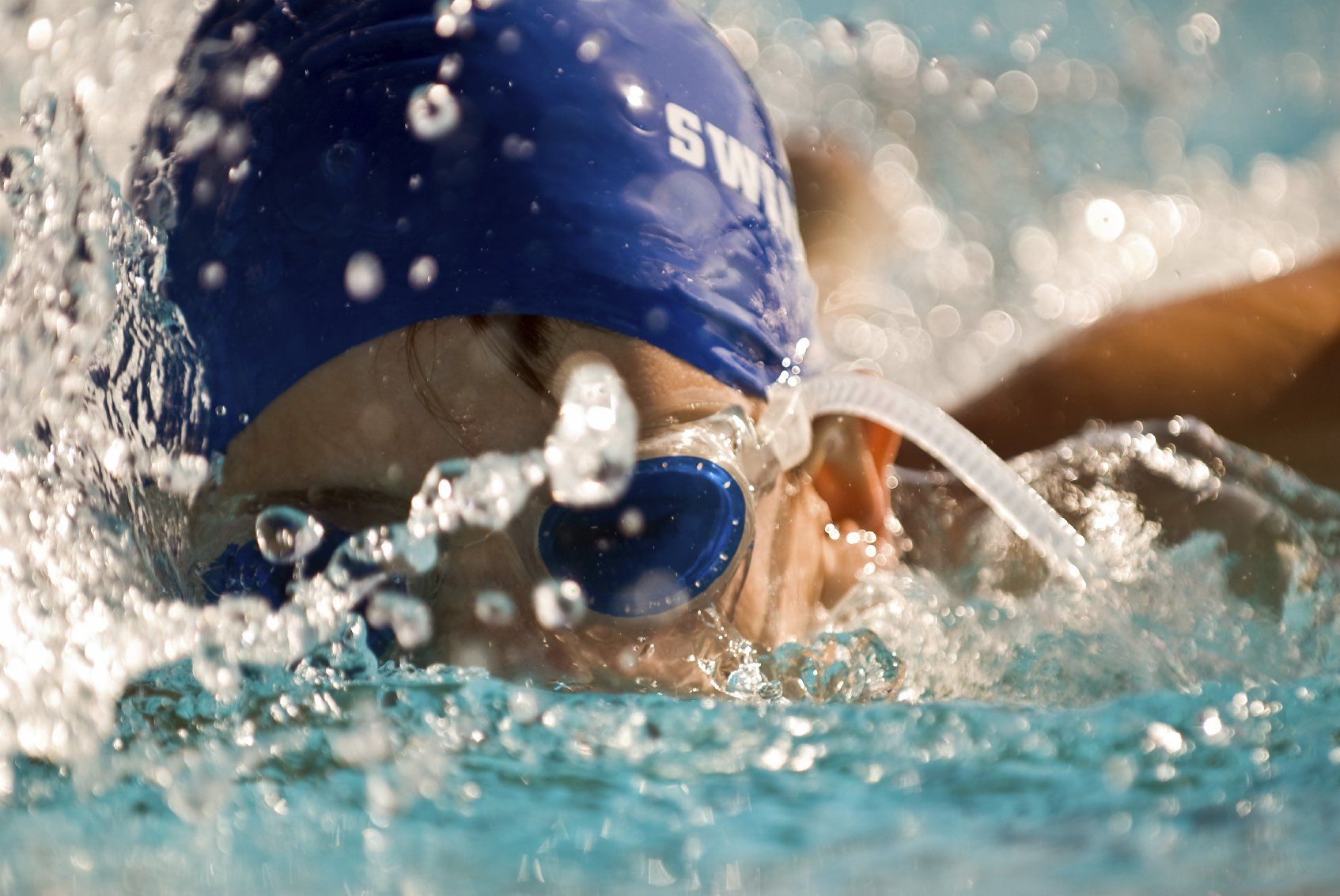
Most of our adult onset swimmers and even my experienced swimmers would be lying to you if they told you there wasn’t a little bit of anxiety prior to gun going off at the start of a triathlon. To start off on a very serious note athletes have died in the water during triathlon. I remember as an observer standing near the start of IRONMAN Louisville watching as the emergency crews loaded up a swimmer into the ambulance and seeing the lights and hearing the sirens as it pulled away from the Ohio River. When I did IRONMAN NYC in 2012, my wife had to experience a terrible tragedy waiting for me to exit the water. An athlete went down while in the water. Emergency personnel had gotten the victim in the boat and started resuscitation and they rushed toward the medical tents where medical doctors lined the shore waiting to take over. The rescue boat bottomed out prior to reaching the shore. The doctors helplessly had to watch as time seemed like it stopped. The on boat staff continued working on the lifeless body as the driver furiously worked to get the boat unstuck. That man died that day. IRONMAN has a 10 step SwimSmart Program to increase safety of an IRONMAN swim and we have expanded upon them here 1. Prepare for Race Conditions – The old Cliché nothing new on race day also goes for the swim. Our first open water swim should not be on race day. Athletes need to add the specificity of sighting into their training. Athletes also need to be prepared for contact. It is like a washing machine and knowing that it is not intentional and literally rolling with the punches is vital. A great way to simulate this is by swimming 3 wide to a lane during practice with some of your triathlon buddies. 2. Race in Shorter Events – short course racing can help prepare you for the duration and distance of a long course swim. If a venue hosts multiple events ie IRONMAN Chattanooga 70.3 and 140.6 getting some experience in the River prior to the full IRONMAN would be great. You could also look for Sprint or Olympic Options prior to this. A lake or reservoir swim is much different than an ocean or tidal river swim. Time on course or in similar water is a huge boost to preparation for Race Day. 3. Learn About the Course Details – having intimate knowledge of the course is vital. This isn’t just knowing how many buoys prior to the turn. This is also studying tide charts, knowing where the sun rises )ie IRONMAN Muncie after your second right hand turn you will be looking directly into the morning sun depending on your wave time), identifying landmarks and high points on land to sight off of (this could be a building, tall tree, clearing of trees, a boat etc…) know that there will be congestion at all turn buoys. If you are novice it may be a best practice to swing a little wide and stay out of the “washing machine”. Unless specifically noted all buoys that are not turn buoys are for guidance. You can be on either side of them. You may be wondering while all the hardcore swimmers are lining up 25 yards down the beach for the swim start. At Escape from Alcatraz you better not aim at the swim exit for your navigation landmark or you will be swept away for shark bait in the 55 degree water. 4. Ensure Heart Health – The American Heart Association has a 12-step process for competitive athletes. We utilize the American College of Sports Medicine Coronary Artery Disease Risk Factor Stratification to determine risk and if physician clearance is needed prior to starting an exercise program. There is also the standard Physical Activity Readiness Questionnaire, which is imperative as well. As always it is recommended to get a regular physical with your primary physician and let them know you plan on engaging in the sport of triathlon. 5. Pay attention to warning signs – if it feels sketchy it is sketchy. If you have chest pain, tightness, discomfort, shortness of breath, or are lightheaded or “blacking out” while training you need to see your physician right away. 6. Don’t use New Gear on Race Day – NOTHING NEW ON RACE DAY – you are in control of what equipment you use on race day. Race day should not be the first time you have donned your wet suit. New never used before goggles are guaranteed to leak. If the water temperatures and rules allow it and you plan on using booties or a hood you should have practiced with them. If you don’t normally wear ear plugs don’t wear them on race day this will distort your proprioception. 7. Warm Up on Race day – this starts with preparation. If you plan on wearing a wetsuit you should have ample time to properly get into the wetsuit. This takes at least 5-10 minutes and often requires a buddy to get into properly. If a practice swim is not available using swim cords on dry land or at least doing some cardiovascular efforts to increase the body temperature and heart rate is important. This can be a simple as jogging and push ups. 8. Check out the Course – prior to arriving at the race site study maps of the course. Attend the athlete briefing to assure there are no course changes. Match up the observable course to maps and instructions given from race personnel. Observing swim start and exits, will you be jumping off a dock? Is it a sand beach? Are there any rocks to avoid? 9. Start Easy – Relax and Breathe – Going all out off the line can not only be disastrous for your race but also jeopardize your safety especially if you lack experience. Staying relax and focused at a sustainable pace is key. 10. Be alert and Ask for Help – There will be contact be prepared for it. Don’t get mad it wasn’t intentional. If you recognize that you are going off course it is perfectly fine to go to your recovery stroke get a new bearing and continue on. Take breaks as needed and raise a hand to race personnel if you need assistance. Some races will even have assistance pads and you can use an static object to take a break on and not make forward progress to assure there is no outside assistance and is 100% within the rules.
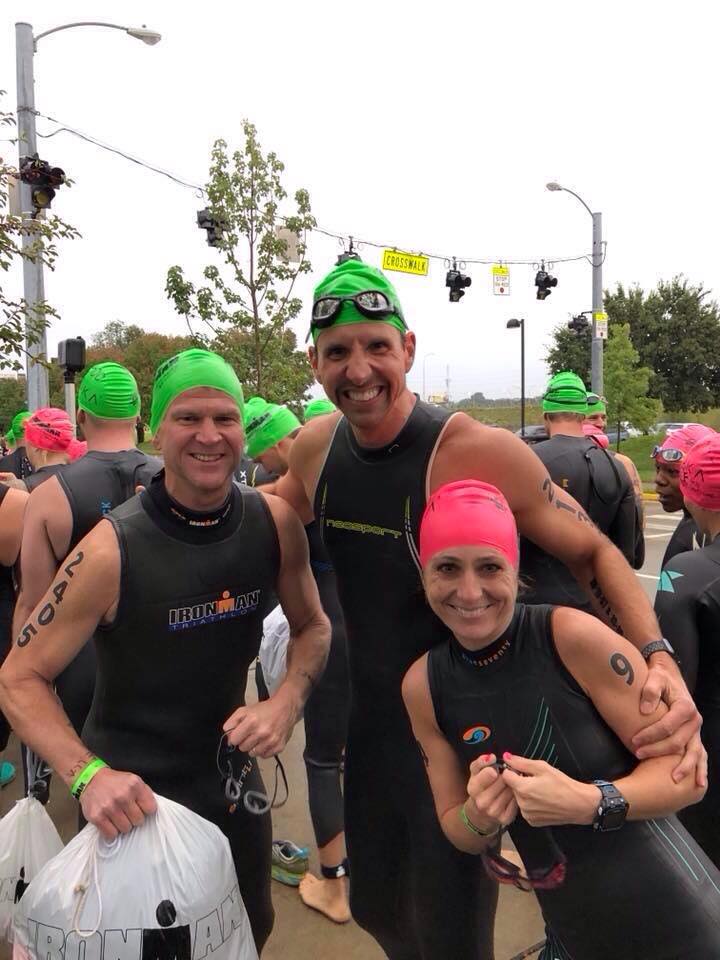
One of the biggest barriers into age group triathlon is the fear of the swim. This is also one of the reasons why completion of a triathlon is so rewarding for individuals. Now most athletes can swim but they have never taken a competitive stroke. So they can make it across the pool without drowning but initially even one or two lengths of the pool is exhausting. Some will quit right here. This is very natural response. Our body is telling us that this is an unsafe environment. Let’s break it down we are in a medium of water where we are horizontal, buoyant and floating, our hearing is disrupted, in open water we often can’t see even our hands in front of our face and we are face down somewhere we can only breath in a metered fashion. This foreign proprioception and kinesthetic awareness creates a fear inducing panic. It takes a while to shift our natural defense mechanisms over to gain comfort in the water. Below are 3 drills that will assist with gaining comfort in the water and develop sound swim mechanics: 1. Sink Downs – one of the biggest problems we see athletes suffer from is body position in the water. Instead of traveling through the water in a tight cylinder the feet sink lower than the torso creating a parachute effect making the swimmer struggle to gain propulsion forward. It is helpful to think of the body as a teeter-tooter pivoting at the center of mass. While lifting the head is a common problem, a bigger contributor is the athlete has pressure balance scenario created from the air-filled barrel of the chest. It is not enough just to tuck the chin a fist or tennis balls distance from the chest. The athlete must also be pushing down the torso into the water to elevate the feet and back of the teeter-totter. This becomes easier to do as air is expelled from the chest in a consistent fashion when the mouth is face down in the water. We get the added benefit of having all of our air out so when we go to sneak a breath during a breath cycle in the tiny window of opportunity in the trough of water we are only taking air in. So the drill is rather simple, the athlete gets into a medium depth of water goes under water and raises feet off of the bottom. Most athletes at this time will start to float near the surface of the water. The athlete starts a steady stream of bubbles out from the nose and mouth as this air is expelled they will naturally sink to the bottom. When you hit the bottom pop up and catch your breath. Rinse and repeat. Initially this may be 10-15 minutes of a beginners swim workout. 2. Kicking on Side – The best drill for developing proper posture and alignment is the side kicking drill. In this drill, the athlete is rotated 90 degrees to either side. They have one hand extended in front of them where each distal extremity component is lower than the previous joint. So elbow lower than shoulder, wrist lower than elbow and fingers lower than wrist. The shoulders are retracted and held together. This not only keeps the athlete in a small cylinder but allows them to spear through the water and stay taught in a perfect set up to initiate the catch portion of the stroke. Fins can be used initially to help the athlete propel across the pool. We recommend short fins that allow the athlete to have a more natural kick rate. Finis Zoomers would be an example. This is a drill that we use even with our elite athletes and should be a staple of a sound well-rounded swim program.
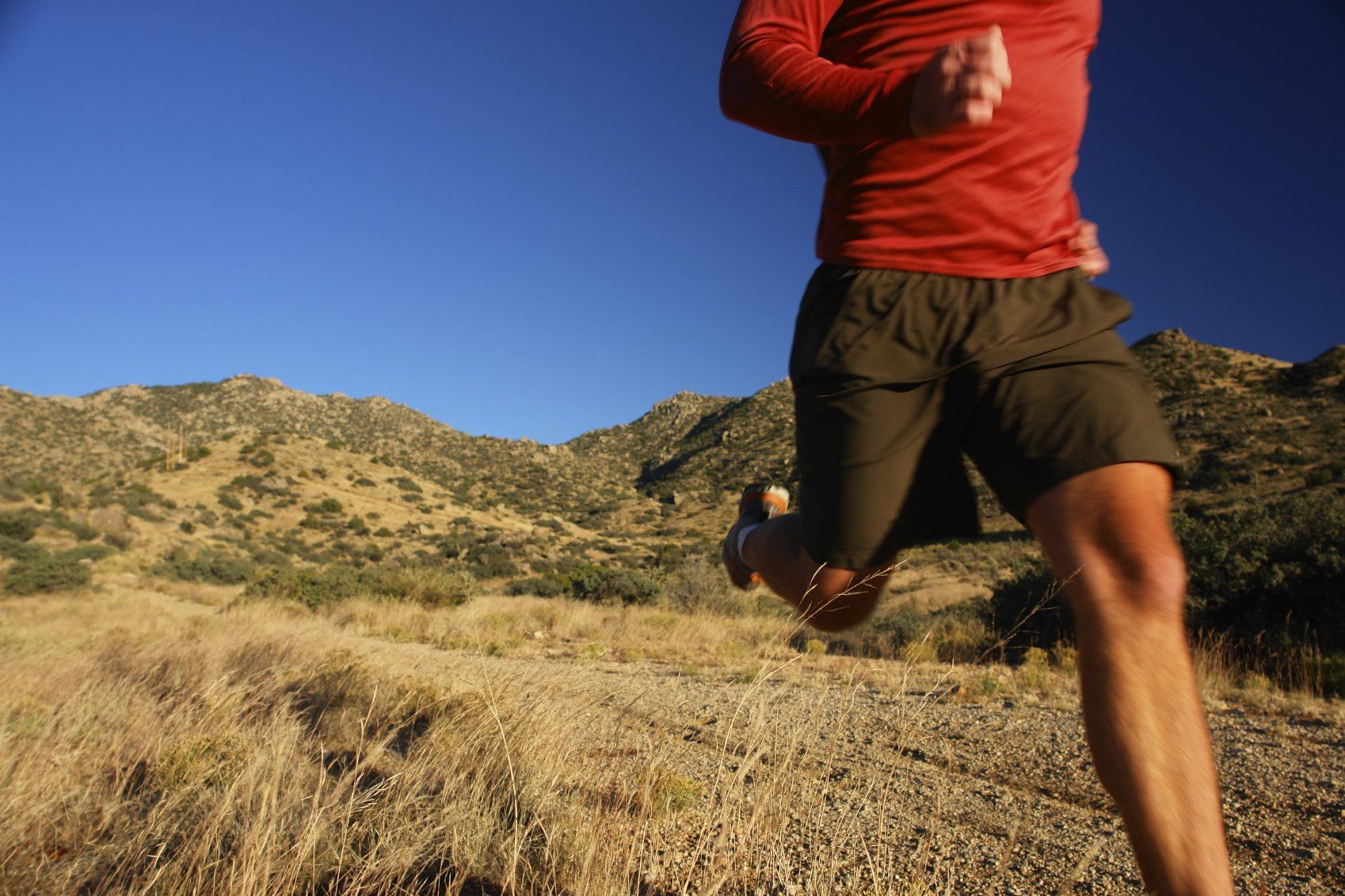
Heel Striking Now this isn’t entirely the athletes fault. From a very young age we are shod in this high heel to toe drop relationship shoes. This big cushy heel just screams land on me and sure enough we develop and ingrain that motor pattern. Heel striking isn’t just a product of landing on our heel but is also exacerbated by a stride length that is too long aka over-striding which will be our next category. Drill to combat Heel Striking – strides which can be done barefoot if terrain is safe for this. Sample workout: 10 minute warm up Z1 ++ 6 x 30 second strides with a 2 minute recovery Recovery protocol as follows: 1. walk the first third of the recovery back to start 2. choose- a drill of choice for the middle third Drills to focus on: (click on the workout for an example video) Butt kickers Ankling Pawing Lateral Shuffle/Carioca A Skips B Skips 3. walk the remaining third of recovery ++ 5 minute Cooldown
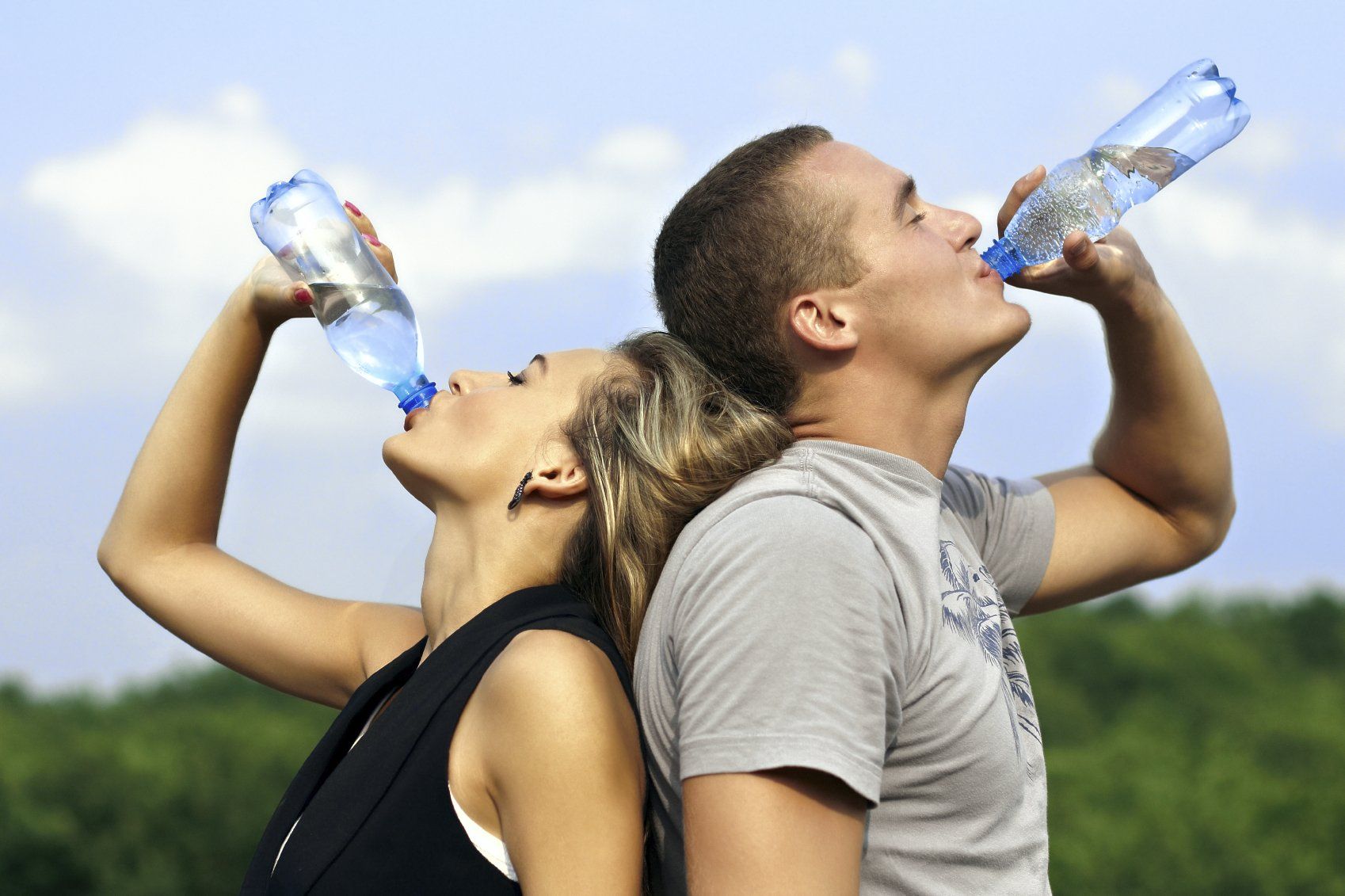
Fueling In and around the workout is the most important nutrition of the day and influences the workout they are in as well as future workouts and performance. What athletes don’t understand is that this also has a major influence on body composition. You aren’t just what you eat but when you eat it is also important. If you don’t want to know the “Why” skip to the bottom to the “How” section at the bottom. If athletes don’t have the ability to have a meal 2-3 hours prior to their scheduled workout session it is imperative that they get started fueling just prior to the start of the workout. This timing should happen within the last 10 minutes prior starting the workout. This can be as simple as 6-8 ounces fruit juice, a gel with water, or starting their intra-workout nutrition formula. An average size male athlete has absorptions rates between 30-90grams/hr during exercise. The upper end of this scale 90g can only be achieved with utilizing multiple delivery methods our bodies can utilize. We transport glucose and fructose via different transport systems. Knowing what is in your nutritional product is key and what you tolerate well is vital to your performance. Endurance Athlete Fueling Options There are many endurance fuel options available and an entire industry devoted to it. Glucose, fructose and maltodextrin are the primary ingredients that contain the calories of these fuel sources. The delivery methods come in powders that are mixed into liquids solutions, gel packets, bars, chewy candies etc… The delivery method to use is very individual. As intensity increases blood is shunted from the core of the body and shifted out to the working skeletal muscles. This slows the digestion process down significantly and may wreak havoc on a normally iron stomached person. With under-fueling the dreaded “bonk” or “hitting the wall” technically called hypoglycemia may show up stopping an athlete in their tracks whereas on the polar opposite end of the spectrum over fueling in a short duration may lock up the stomach and shutdown all forward progress and leave you lying on the side of the course in the fetal position contemplating jumping in front of traffic to end the misery. As the duration of your workout increases nutrition inevitably becomes more and more important. As any motor vehicle is limited by it’s efficiency and size of it’s gas tank the human body functions in a similar manner. We can store around 1hr-1.5 hrs worth of calories on board in the form of glycogen which we store in our skeletal muscles and liver. While we are working out and immediately post-workout we are very insulin sensitive and have the ability to not only shuttle nutrients we ingest almost directly into the liver and skeletal muscle but also supercompensate to a level that has an added benefit for future workouts. Glycogen debt is a phenomena where athletes progressively dig deeper and deeper into a state of having less and less in the tank. We find that this leads to cravings outside the optimal window of nutrient timing which may lead to some of this eating be excessive and/or at a time that the athlete especially if sleep deprived or stressed where they may be insulin resistant where they literally can’t get the nutrients into the target cells and stored as fat. In addition to the carbohydrate profile it is also important to have a electrolyte profile of your solution that still allows for an optimal osmoality to assure absorption without gastric distress. For carbohydrates a starting point for this would be to target at least 2 calories per lb of lean body mass. To do this calculation we need to also know that carbohydrates contain 4 calories per gram. If the food source has fiber with it we net out the fiber prior to doing the calculation. So if a food source has 20 grams of carbohydrates and 5 grams of fiber we have a net 15 grams of carbohydrates which would be 60 calories. Example: 200lb @ 20% Bodyfat 200lbs x .20 = 40 lbs of fat 200lbs – 40lbs = 160 lbs of lean body mass 160lbs x 2 cals per lb per hour = 320 calories/hour 320 calories / hour / 4 cals per gram = 80 Grams It is obvious that the simpler form that these calories are in the more readily they will become bioavailable and be efficiently processed. For this a fluid solution is our top option. Secondly, a gel with water would be another option. Protein – while some athletes like to use protein during exercise as it gives them a bit of satiety we know that protein will also slow down the carbohydrate delivery. During the workout (especially races) and in the post workout recovery window solutions sans protein would be preferential. Yes so that post workout recovery protein shake should wait until we get a chance to get our carbohydrates replenished. Immediately post workout we want to shift our blend to a more fast acting carbohydrate solution to take advantage of the cells being insulin sensitive at this time and to refill the gas tank of the liver and skeletal muscle. If it is a morning workout we have a caffeinated blend which we can use for a pick me up and should help shuttle nutrients a bit faster. We don’t want any caffeine after noon for our athletes that have a classic work schedule which would affect there sleep. If this is an afternoon or evening workout we want to start fueling about 10 minutes prior to the exercise bout. 6-8 ounces of orange juice for example is not only good for the liver but will get some fructose in the mix. Follow this by starting your Intraworkout and continue through the entire workout.
The IRONMAN Bike is the longest discipline on race day. Performance here is critical for race day success. 3 P’s to Bike Performance Practiced - perform what you practiced in training. Use nutrition and gear that you are accustomed to Patience- a proper taper will leave you with the freshest legs you have ever had. Holding back early will pay its dividends on the run. Remember if you bikes to easy you have 26.2 miles to prove it. There is no such thing as a great bike with a poor run. Persistence - sticking to the race plan. Don’t let the excitement of the big day intrude your preparation. Perpetual forward progress is the name of the game.

IRONMAN Transitions Do’s and Dont's Do – give yourself ample time to become well acquainted with the flow of the transition area prior to the race. Start from the swim exit and visualize your route through your gear bags, into the change tent and to your bike rack. Think of what you will be doing while you walk the transition area for rehearsal. These mental reps pay their dividends on race day. Don’t – wait until the last minute to drop off your bike and or gear backs the day prior to the event or arrive in transition right before it closes on race morning. First thing to do is focus on the bike if something occurred while in transition we want to be able to have as much time as possible to ameliorate the issue. *Check tire pressure and adjust for race day conditions. Usually dropping a few PSI for slick conditions is beneficial but stay within manufactures recommendations for your weight. While bike tech and other individuals will have bike pumps, bringing your own to top off the tires is a great way to save some time. If you are taking advantage of the rolling resistance properties of latex tubes note that they will lose air overnight so don’t count on them to be inflated to the same level when you racked the bike the day prior. * Pull bike off the rack and run it through all the gears in the big and the small ring. Set the bike in your starting gear. Do – Check your gear bags on race morning – the location will often change slightly from where you left it the day prior as volunteers sort, straighten and organize the bags. You want to quickly check that the contents have not been tampered with and that everything is there and any fresh race nutrition is stowed appropriately. If raining tie the bag up tightly and fold it over to avoid wet running gear in T2. We want to at least start dry. Don’t – be in a rush! Smooth is fast and fast is smooth. We should be practicing our transition and using the gear we will be running at the race prior to the big day. Nothing new on race day! Do – Buckle your helmet. Don’t be that guy who’s race is ended because they made a silly mistake. Every time the helmet goes on your head it should be strapped immediately. Get in this habit now.